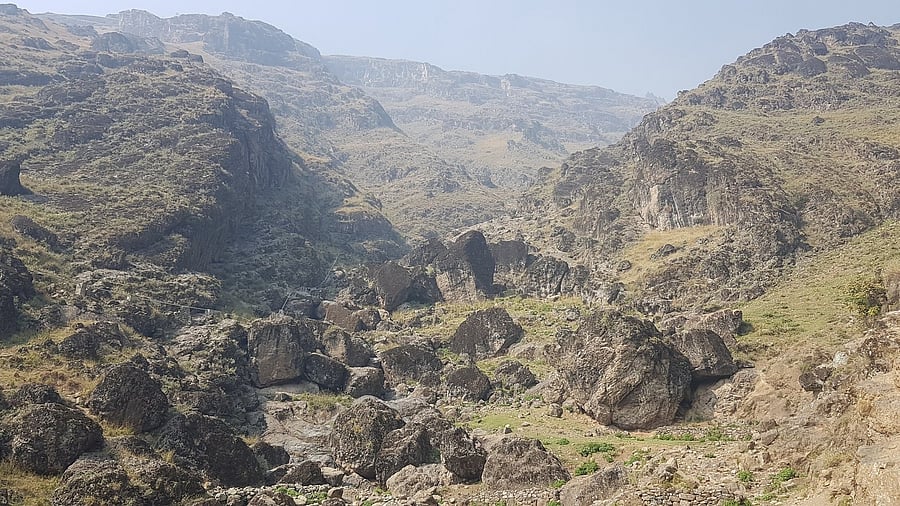
Guryul Ravine in Jammu and Kashmir.
Credit: X/@sclsrinagar
Srinagar: The Geological Survey of India (GSI) has issued a stark warning to the Jammu and Kashmir administration over what it describes as a “serious threat” to the internationally important Guryul Ravine fossil site in Khonmoh, on the outskirts of Srinagar.
In a strongly worded letter to Chief Secretary Atal Dulloo, the GSI has urged urgent intervention to halt the ongoing disruption and protect what is considered as one of the most significant geological sites in the world.
The Guryul Ravines—geologically identified as the Vihi district—are a rare and ancient repository of fossil records that date back nearly 260 million years and preserve clear evidence of the catastrophic Permian–Triassic mass extinction, which wiped out nearly all life on Earth.
Significantly, the site also hosts what geologists believe is the world’s first-ever recorded tsunami event, its imprint still visible in the exposed rock layers. Despite its unique status and scientific importance, the Guryul Ravine has suffered years of damage due to unchecked quarrying, construction, and other human interventions, which scientists fear could lead to the irreversible loss of invaluable geological evidence.
“I wish to apprise you about a serious issue regarding the preservation and protection of an internationally significant geological section exposed at Guryul Ravine…,” the GSI letter to the Chief Secretary states.
The GSI noted that the site had already been declared a geological fossiliferous zone under Government Order No. 94-IND of 2017, which earmarked 9,83,337 square meters for protection. However, the agency expressed alarm that a part of the protected area—particularly the southern section—has now been diverted for industrial use. This, GSI warns, will not only damage the site but also cut off access, including the road leading to it.
“Considering its international importance, the site has been proposed for National Geological Monument status by the GSI,” the letter reads. “It hosts signatures of past climate change events at the Permian-Triassic Boundary (PTB), critical for understanding the current climate crisis and its implications for life on Earth.”
The GSI emphasized the site’s potential for UNESCO World Heritage recognition and pointed out that it has long been a focus of global scientific collaboration. Drawing a direct contrast, the letter criticizes the neglect of Guryul Ravine in India compared to the attention given by China to the Meishan D section, a similar PTB site that the Chinese government has promoted as a model of international geo-strategic cooperation.
“The sad state of affairs with Guryul Ravine section in Srinagar is that it is being highly ignored in oblivion in the pretext of economic development,” the letter states, warning that the site’s scientific and strategic significance is being sacrificed for short-term industrial interests.
Environmentalists and local advocacy groups have echoed the GSI’s concerns. The Environmental Policy Group (EPG), a Kashmir-based environmental and heritage advocacy body, reiterated its long-standing demand for Guryul Ravine to be declared an International Fossil Park.
“We have been raising this issue for years,” said EPG convener Faiz Bakshi. “Guryul Ravine is not just a local treasure—it is a natural archive that speaks of life, extinction, and survival on Earth. Any damage to this site is irreversible. It must be protected, not bulldozed for short-term development.”
The GSI’s warning comes at a time when global attention to geological heritage and climate history has never been more critical.